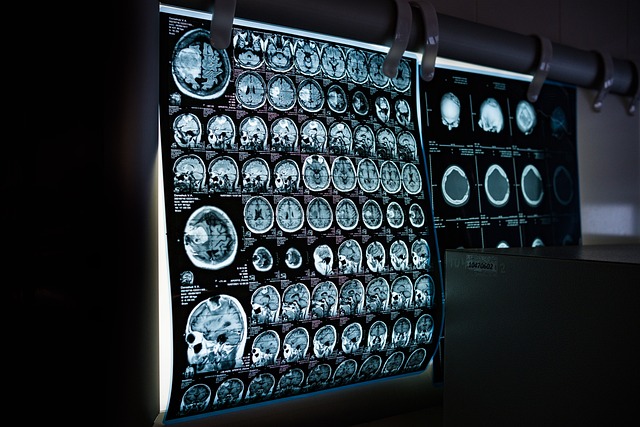Understanding and Treating Tardive Dyskinesia: A Comprehensive Guide
Tardive dyskinesia is a complex neurological condition characterized by involuntary, repetitive movements that can significantly impact a person's quality of life. This disorder often develops as a side effect of long-term use of certain medications, particularly antipsychotics. As awareness of tardive dyskinesia grows, so does the need for effective treatment options. In this article, we'll explore the current understanding of tardive dyskinesia and the various treatment approaches available to manage its symptoms.

The exact mechanism by which tardive dyskinesia develops is not fully understood, but it is believed to involve changes in the brain’s dopamine system. Dopamine is a neurotransmitter that plays a crucial role in controlling movement. When antipsychotic medications block dopamine receptors for extended periods, it can lead to a hypersensitivity of these receptors, resulting in the involuntary movements characteristic of tardive dyskinesia.
What Are the Common Symptoms of Tardive Dyskinesia?
Tardive dyskinesia manifests as involuntary movements that can affect various parts of the body. The most common symptoms include:
-
Facial movements: Grimacing, tongue protrusion, lip smacking, and rapid blinking
-
Limb movements: Jerking or wiggling of fingers, toes, arms, or legs
-
Trunk movements: Rocking, twisting, or swaying of the torso
-
Respiratory movements: Irregular breathing patterns or grunting sounds
These movements can range from mild and barely noticeable to severe and disabling. In some cases, tardive dyskinesia can interfere with daily activities such as eating, speaking, and walking. The severity and impact of symptoms can vary greatly from person to person.
How is Tardive Dyskinesia Diagnosed and Assessed?
Diagnosing tardive dyskinesia involves a careful evaluation of a patient’s medical history, physical examination, and assessment of symptoms. Healthcare providers typically use standardized rating scales to measure the severity and progression of the condition. The most commonly used tool is the Abnormal Involuntary Movement Scale (AIMS), which assesses the presence and intensity of involuntary movements in different body regions.
Early detection of tardive dyskinesia is crucial for effective management. Regular screening of patients taking antipsychotic medications can help identify the condition in its early stages when interventions may be more effective. It’s important to note that symptoms of tardive dyskinesia can sometimes be confused with other movement disorders, so a thorough evaluation by a neurologist or movement disorder specialist may be necessary for an accurate diagnosis.
What Are the Current Treatment Options for Tardive Dyskinesia?
Treatment of tardive dyskinesia often involves a multifaceted approach, combining medication adjustments, targeted therapies, and supportive care. The primary goals of treatment are to reduce the severity of involuntary movements and improve the patient’s overall quality of life. Here are some of the current treatment options:
-
Medication Adjustments: In some cases, switching to a different antipsychotic medication or reducing the dose of the current medication may help alleviate symptoms. However, this approach must be carefully managed to avoid worsening of the underlying psychiatric condition.
-
Vesicular Monoamine Transporter 2 (VMAT2) Inhibitors: These medications, such as valbenazine and deutetrabenazine, are specifically approved by the FDA for the treatment of tardive dyskinesia. They work by regulating dopamine release in the brain and have shown significant efficacy in reducing involuntary movements.
-
Other Medications: In some cases, other drugs such as benzodiazepines, anticholinergics, or botulinum toxin injections may be used to manage specific symptoms of tardive dyskinesia.
-
Non-Pharmacological Approaches: Supportive therapies such as physical therapy, occupational therapy, and speech therapy can help patients cope with the functional impairments caused by tardive dyskinesia.
-
Deep Brain Stimulation: In severe cases that do not respond to other treatments, deep brain stimulation may be considered as a surgical option to manage symptoms.
How Effective Are VMAT2 Inhibitors in Treating Tardive Dyskinesia?
VMAT2 inhibitors have emerged as a promising treatment option for tardive dyskinesia. These medications work by reducing the amount of dopamine available in the synaptic cleft, which helps to normalize the function of dopamine receptors that have become hypersensitive due to long-term antipsychotic use.
Clinical trials have demonstrated significant improvements in tardive dyskinesia symptoms with the use of VMAT2 inhibitors. For example, studies have shown that valbenazine can reduce involuntary movements by 23.8% to 31.7% compared to placebo. Similarly, deutetrabenazine has been shown to reduce symptoms by 15% to 23% in clinical trials.
It’s important to note that while these medications can be highly effective, they may not completely eliminate all symptoms in all patients. The response to treatment can vary, and ongoing management and monitoring are necessary to ensure optimal outcomes.
What Are the Long-Term Prospects for Tardive Dyskinesia Patients?
The long-term outlook for individuals with tardive dyskinesia can vary widely depending on factors such as the severity of symptoms, the underlying cause, and the effectiveness of treatment. In some cases, symptoms may improve or resolve after discontinuation of the offending medication, particularly if caught early. However, for many patients, tardive dyskinesia can be a chronic condition requiring ongoing management.
With the advent of new treatments like VMAT2 inhibitors, the prognosis for many tardive dyskinesia patients has improved. These medications can provide significant symptom relief and improve quality of life for many individuals. However, it’s important to recognize that tardive dyskinesia management often requires a long-term commitment to treatment and regular follow-up with healthcare providers.
Ongoing research into the underlying mechanisms of tardive dyskinesia and the development of new treatment modalities continues to offer hope for improved outcomes in the future. As our understanding of this complex disorder grows, so too does the potential for more effective and targeted therapies.
In conclusion, while tardive dyskinesia remains a challenging neurological condition, advancements in treatment options and a growing awareness of the disorder are helping to improve outcomes for many patients. Early detection, comprehensive evaluation, and a personalized approach to treatment are key factors in managing tardive dyskinesia and minimizing its impact on patients’ lives.
This article is for informational purposes only and should not be considered medical advice. Please consult a qualified healthcare professional for personalized guidance and treatment.






